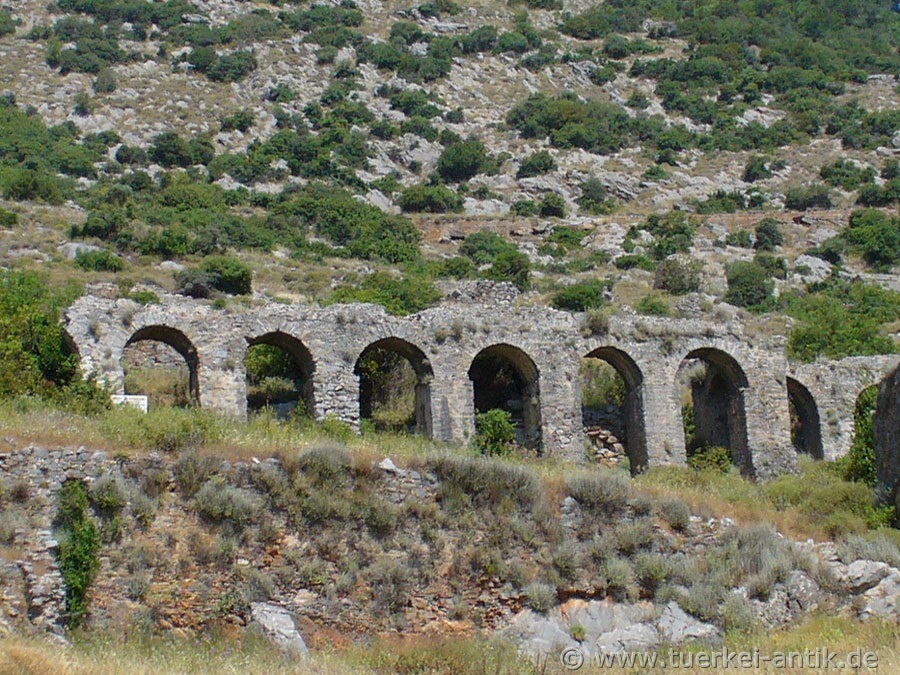|
The first traces of settlement date back to the 8th century BC. In the heyday of this settlement in the Roman Empire, perhaps more than 20,000 inhabitants lived there.
52 A.D. Anemurion was besieged in vain by Cilician pirates. A replacement troop from Syria under Curtius Severus was repulsed by them, only King Antiochus IV of Kommagene could defeat them and kill Troxobor and other leaders.
A severe earthquake in the 4th century destroyed the entire water supply, and a restoration of the aqueducts was not considered worthwhile. However, the city continued to exist until the middle of the 7th century.
Anemurion consisted of a fortified upper town on Cape Anamur and a lower town to the north. A large necropolis in the northwest of the city has about 350 graves from the 1st to 4th centuries. Inside they were decorated with wall paintings and mosaics, of which remains can still be seen. In the city itself there are still remains of a theatre for about 1,500 spectators, an Odeon (or Bouleuterion) with about 900 seats, three baths and a columned street running in a north-south direction.
The mosaics in the Odeon, which are located in a corridor below the spectator stands, are worth seeing. In one of the baths one can still see the water supply; there is a hot water basin that was heated by a fire under the stone basin.
Excavations have also yielded important Byzantine finds. The Anemurium titular bishopric dates back to a former city bishopric. |
|



